Genus Loci - A Place of Visions
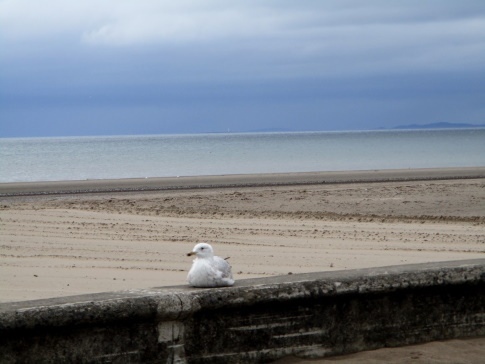
All the quotes are from
'Scotland – A Place of Visions' by Jan Morris and Paul Wakefield.
This gull looks out, over the Irish Sea, from it's wall on the promenade at Ayr.
If we take the time to look around us, rather than keep our eyes directed downward at our path, we see the tell tale signs and there is “no mistaking” where we are.
We can sense after the opening ritual of a ceremony, the border between the realms, that we have moved into a different space of experiences.
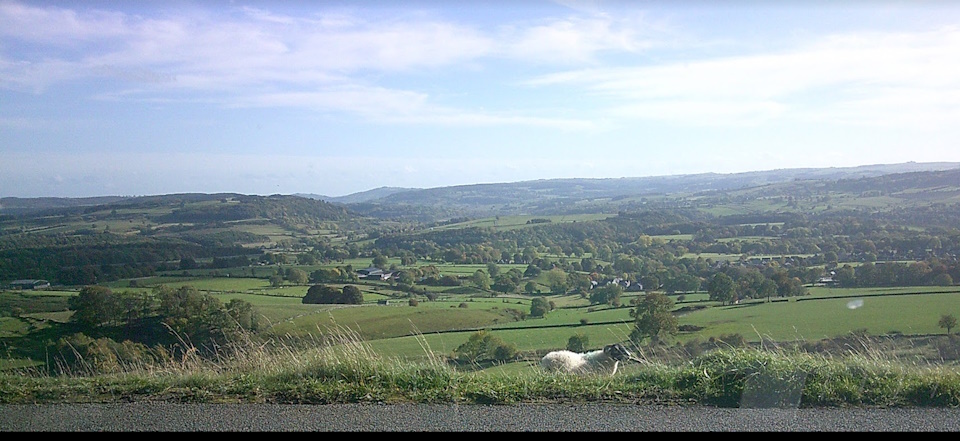
This description of moving from England to Scotland is so typical of our general experience when moving between realms, noticing different genus loci. We know we have moved.
On a fine high September day I crossed the border out of England into Scotland, and found nothing at all to tell me so: no notice of welcome, no fluttering flag, not even a bald announcement of arrival or a warning that I had passd from one legal system to another. …. Perhaps vandals had destroyed the sign. Perhaps souvenir hunters had removed it. Or perhaps, since along that frontier the transition from one country to another is blurred, Scots people and English sharing a history of immemorial give and take, hit and run, and intermarriage – perhaps in some districts the local authorities thought a sign unseemly. …. The border may be a little indeterminate, but just as no country on earth projects a figure more absolute than Scotlands, so there are few which are more instantly recognizable upon the ground. Almost the first building I saw was one of those gaunt Scottish structures. ... almost the first animal I saw was a lithe and spring Shetland sheepdog. ... the first statue depicted a young blood of the country .... waving a banner he had just captured from the English … the first family comprised a trim and respectable young housewife in a tartan skirt, a baby in an extremely expensive looking pram and a husband in leopard skin trousers and a silver studded leather jerkin … No, I concluded as I put away my notebook, perhaps a sign at the border would have been superfluous anyway. There was no mistaking where I was. |
We plan a ceremony. We believe we know the land, the place it is to be held, it may the familiar Hill of Tara or the unknown path in a woodland which we visited as the ideas emerged. And we have an expectation of what the spirit of place may be like. Yet places are often different to how we perceive them at a distance and, when being with the spirit of place, we need to be aware of their current state, how their energies express themselves at this moment of our interractions.
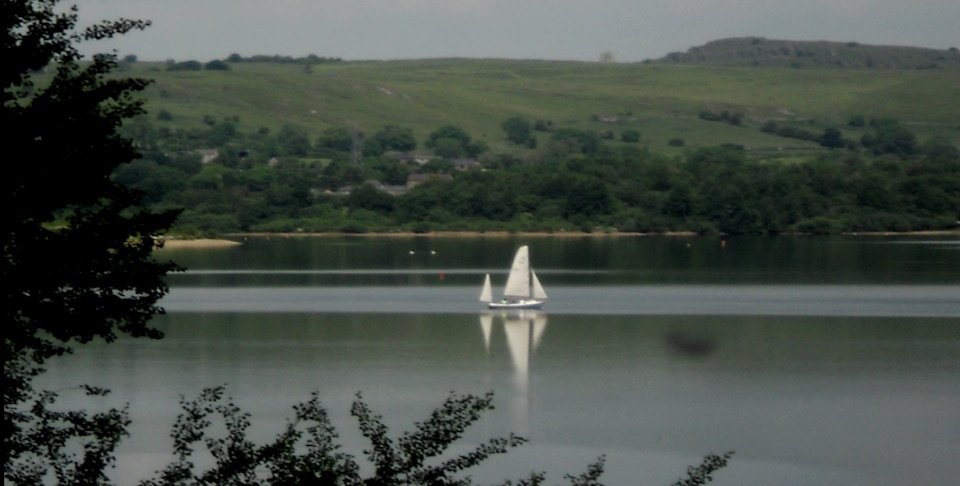
Once I made a winter journey to the birthplace, Leadhills, of the sweet natured Scottish poet Allan Ramsay - My Peggy sings sae saftly, when on my pipe I play, By a' the rest it is confest, by 'a the rest that she sings best …. I fondly expected it to be as gentle as his genius, but it was most distinctly not. Leadhills is said to be the highest village in Scotland, and I believed it. Built in clefts and shelters of the harsh hills, it's rows of single roofed houses pitched this way and that, it seemed to be half pressed into the earth by the winds. Outcrops of rock gave a raw menace to the scene, I thought. |
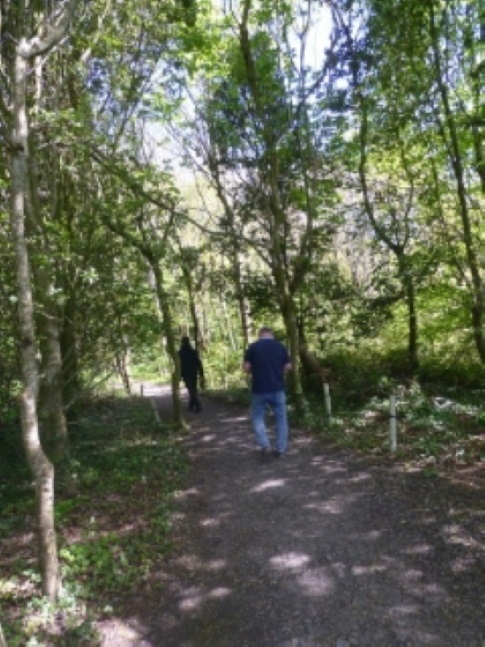 | 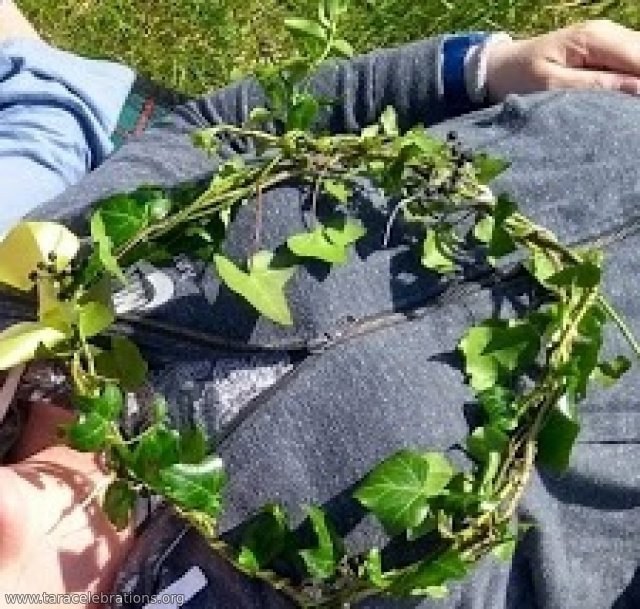 |
And during the ceremony we do not have to know, or need to know, and cannot know, what is occuring for everyone. We play our own part in the whole and will be content with that. Some things are not spoken of, some things are not yours to know.
I watched an elderly inshore fisherman … I asked him how long he had been out. He looked up at me severely through his steel-rimmed spectacles, and responded with a very Scottish counter-question. 'Have you any particular reason for wanting to know?' |
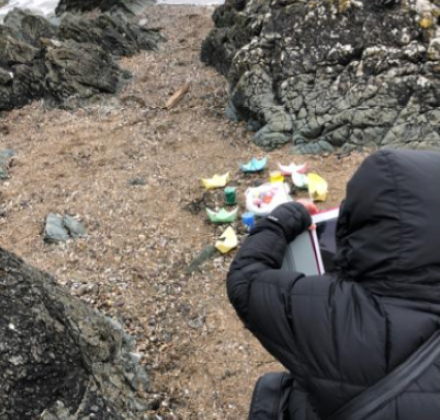 | 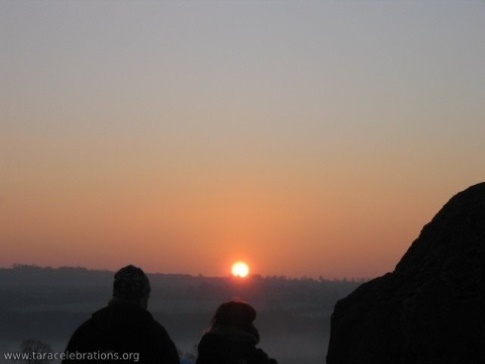 |
Thus we treat the genus loci with respect, recognising it's right to privacy, as much as we treat each participant in a ceremony with respect and acknowledge that they do not have to share details of their life, emotions or sensitivities, intimate or mundane, with us.
Then we come to the closure and again cross the boundary between the realms, realising what lies within the ceremony has a different sense of spirit to what lies outside. And we are reminded yet again, in this last quote, to look about us with all our senses, to be aware of the similarities and differences that are expressed as the genus loci.
Outside the little weaving town of Langholm a hill looks towards England, and on it are two monuments. Half way up, along a winding narrow road, stands a memorial lately erected to Hugh MacDiarmid, that gritty, mischievous but lyrical genus loci. It is a large oblong slab of bronze and steel, the shape of an open book, cut through as in filigree with a multitude of images – birds, a rainstorm, sheaves of corn, a pipe and slyly in one corner a silhouetted portrait of the poet. The thing is planted directly into the turf, and it looks back at you cheerfully, perhaps a little restlessly, with churned mud all around its feet. Beyond it on the summit of the hill, often half-veiled in cloud, there stands the second monument. It is a tall and splendid 18th century obelisk, and it commemorates a Scottish seigneur named Sir John Malcolm, who went from these parts long ago to become Governor of Bombay. It stands there just as one imagines he might have stood himself, calm, assured and high flown, impervious to wind, mist, hail and time, the very figure of Scottishness.
… ... the juxtaposition of the two, the one rooted in reality, the other so unforgettable of image, seems a fitting metaphor to end the text of this book: but, for what lies beyond them both, in the air and the light and the numen of Scotland's visionary realm, look at the pictures – or look at the place. |
written by Nora J
Bealtaine 2019
Enjoy further articles at Blog





